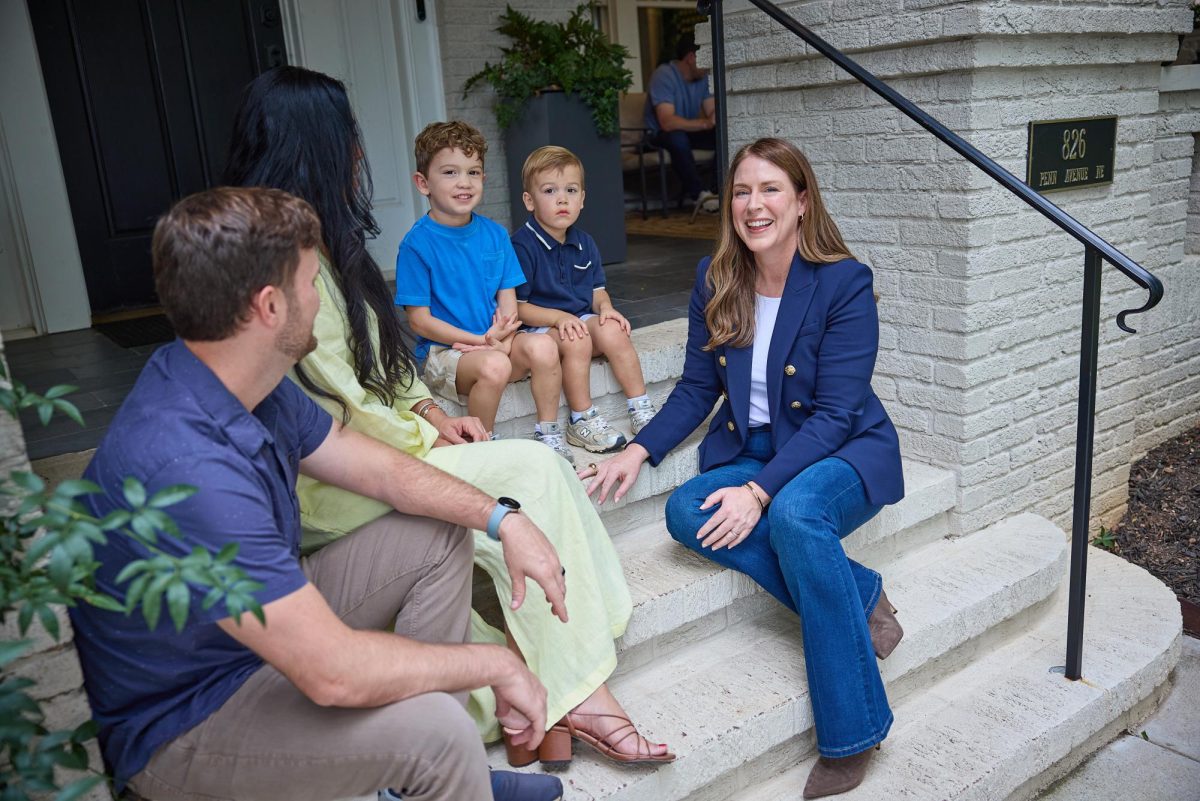G3 Robotics, Grady’s Robotics team, along with its alliances won the Georgia Southern Classic FIRST Robotics Competition on March 1.
This is the first time the team has won a regional competition in its eleven year existence.
“I think this is the culmination of about three years of growth for the team,” Andrew Nichols, the G3 Robotics head coach, said. “It’s not something particularly different that we did this year. It’s that three years ago we started thinking more strategically about how we designed our robots, how we trained our students, what skills we developed, what resources we were using. We put a lot of emphasis on building competitive robots, not just doing it for the fun of it, although it is still a whole lot of fun.”
At the beginning of January, the team was given the parameters that their robot must meet to be a success.
“We’re given a new game every year,” junior Gabriel Kupersmith, a member of the team, said. “In past years it’s been stuff like Frisbee, basketball, firing two- foot diameter exercise balls out of a catapult. This year we were given a challenge called recycle rush. It’s kind of lame, but it’s based around the idea of recycling. We’re essential stacking two and a half foot long totes on top of each other and we’re are trying to organize them as much as possible on a basketball sized field.”
The team is allotted six weeks to build the robot before the competition season begins. After this time period, the competition robot may not be removed from its sealed bag until the beginning of a competition and re-bagged before the team leaves.
The drivers, who control the robots during games, are only able to practice with the robot after it is built. Bagging up the robot gave the drivers limited time to train. In order to combat this problem, the team began building two robots for each game three years ago. This gives the drivers the ability to practice with the robot before the competition and learn what modifications need to be made on the competition robot on pit day, which is the first day of a competition.
This is just one of the strategic decisions the team has implemented over the past few years.
The emphasis on strategic decisions has not only influenced designing and building the robots, but also the way the team approaches competition.
In a robotics competition, there are qualifying and final matches. The final matches are comprised of eight alliances: the eight highest ranked teams each pick the first member of their alliance, and together the new and original member of the alliance select the next member to form a three team alliance.
“In our last three qualifying matches we had changed our strategy in a way that we basically stopped caring what our rank was and started just simply trying to show what our robot could do and what it was designed to do and how it could do it well,” Nichols said.
Focusing on the robot instead of the ranking actually caused their ranking to improve enough to attract the attention of teams in position to draft alliances.
“All during the time when we were doing our matches up until then they, some of the kids were scouting and getting information about the other robots and picking a good possible alliance,” said Luke Esposito, one of the G3 robotics advisers.
The fourth-ranked team selected G3 as its first choice to form an alliance. Together, FLASH, team 1319 from Mauldin, SC and G3 picked their third alliance member, Robots-R-Us, team 3266 of Eaton, Ohio. The joint effort of the three members of the alliance was crucial to the victory.
“Winning this regional gives us a ticket to the world championships in St. Louis, which is a really big deal,” Kupersmith said. “The competition is international scale so there are teams from Canada, Mexico, Brazil, Israel, basically all around the world to compete in St. Louis.”
The high performance at the regional competition has left the team elated.
“It’s something that this group of seniors has been chasing for three years,” Nichols said. “This is our eleventh season that the team has existed and the eleventh year in which I have been involved and this is our first regional win in any of those years, so it’s a really big deal, not just for the students on the team but also for the mentors and adults that have been doing this for all that time that helped found the team 11 years ago.”
While Esposito has only been with the team since he arrived at Grady in August, he feels the impact of the team’s success.
“We were doing very well, which is exciting, because I don’t win anything,” Esposito said.
Students on the team feel similarly.
Competitors feel similarly.
“It’s pretty exciting,” Kupersmith said. “There are like a million pictures of me on Facebook screaming and picking people up afterward. The competitions are extremely exciting. I don’t think I’ve ever had as much of a thrill as standing behind a driver’s station competing with these other teams.”
This is not the only success the robotics team has experienced this year. After working to help MARTA utilize Unmanned Aerial Vehicles to the city’s advantage, a sub team of G3, the UAV team, including juniors Isabelle Carson, Gabriel Kupersmith and Sajjad Ali, placed second in the nationwide competition Drone Prize 2014 over the summer.
Because of this success, G3 piloted a new elementary and middle school drone competition which was held at Grady on March 14.






